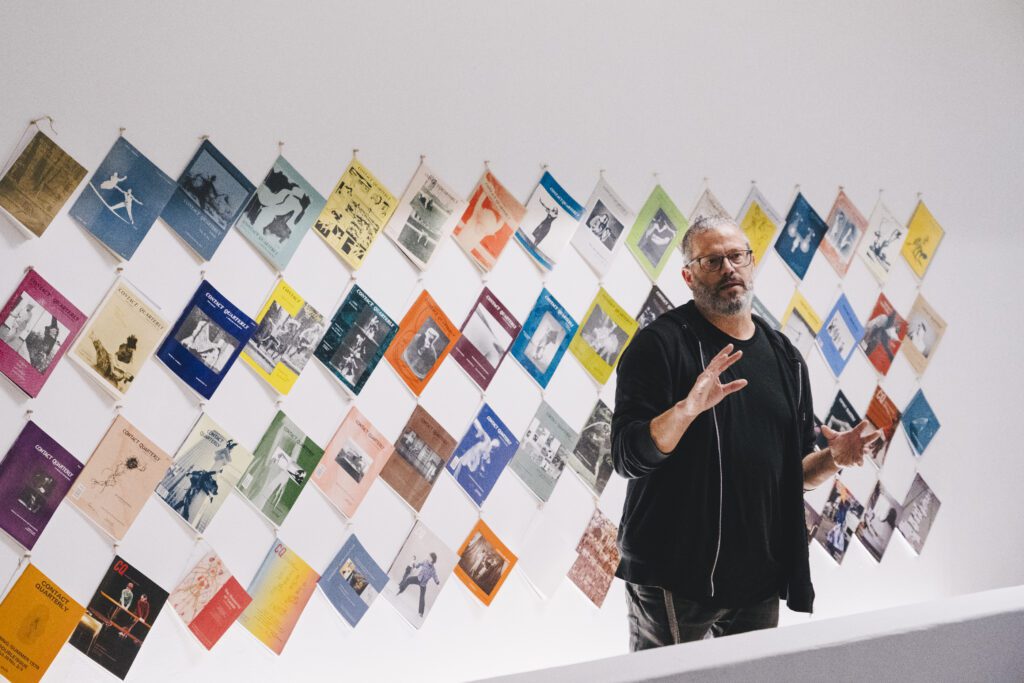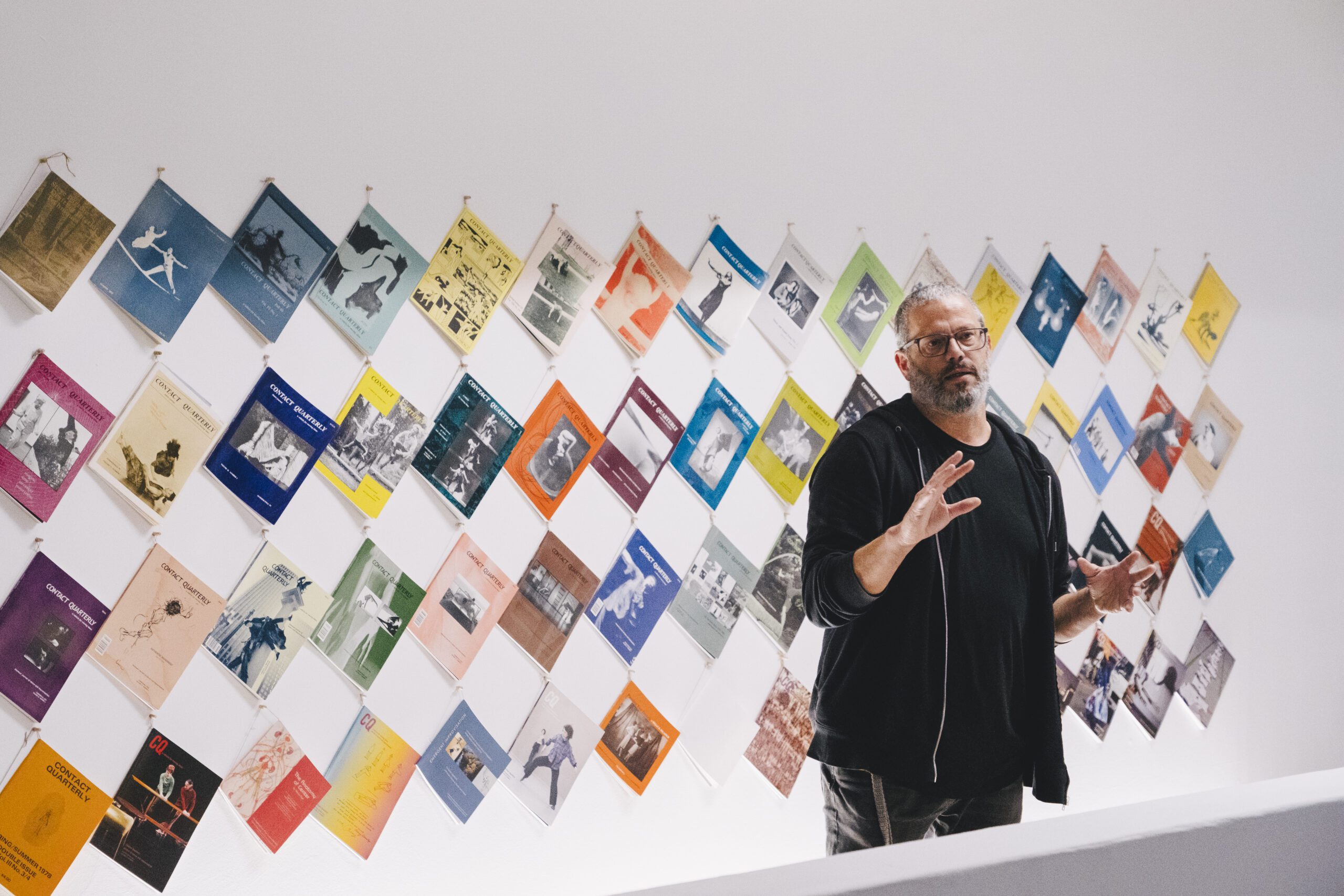In both scientific and artistic fields, the act of investigating presupposes breaking the frontiers of human knowledge. The methodologies in use can be varied, but one of the characteristics of their research are the discoveries and revelations that their processes provide to researchers, eventually for the future benefit of societies.
In this regard, the European project Premiere – Performing arts in a new era, has demanded a dialogical stance among the twelve partners of the consortium, forcing us to listen to the voice of the other, whether in the field of computer science or arts and humanities. The project comprises the life cycle of productions in the performing arts, of which the archive in theatre and dance is one of the four phases under study, one in which Portugal cultural association Forum Dança is most involved.
Under the umbrella designation of “archive” theoretical and practical aspects are included that provide relations of various kinds: conceptual, e.g., the archive that is sometimes codifying and static, sometimes creating narratives and movement; instrumental, through the use of tools, software, or AI technologies; and human, as it attempts to capture the interest of various stakeholders such as programmers, researchers, artists, documentary science professionals and spectators.

In this archival context of a more traditional sense – i.e., supporting the conservation of works -, several projects1 on a national scale, and of an artistic or scientific nature, have been created to implement digital preservation strategies and boost the archival potential of contemporary creation, addressing topics such as innovation, accessibility, and the intangible heritage of the performing arts. The Internet is, in these cases, the technical infrastructure that connects collections and archives. For dance archives, within Premiere project, it is intended to apply advanced digital technologies and AI to improve the image and content of video recordings, in order to develop a variety of tools that will preserve these records and foster a more dynamic, pleasant and creative interface with users. Our positioning as a foundational structure of contemporary dance in Portugal recognizes the importance of the archive in the processes of education and artistic experimentation, and we foresee that the results of Premiere will lure individual users (students and researchers), might be inserted in institutional archive networks (museums, universities), or will be utilized by companies and cultural centres as a platform for dynamization. Although the latter is a stated objective of the project, the first 18 months of this research process have allowed us to gain awareness of other important dimensions of archiving, in the manner of revelations that refer to sociological and aesthetic-epistemological aspects of this practice.
Firstly, we recall an event held with the purpose of dissemination and contact with the artistic and academic community, which consisted of a round table open to the public and entitled Archiving for the Future, organized within the framework of the Premiere Open Days (20 and 21 September 2023) during the consortium meeting in Amsterdam, in the Netherlands. Indeed, in addition to topics surrounding the advantages and limitations of digitizing archives, other issues arose in the debate: the duty of archival institutions to open up to society; the urge to foster the archive’s visibility as a contribution to a more participatory and democratic society.
Bringing together artists and archival specialists from various European countries (including repertoire companies and independent artists) the common interest expanded the terms of digitization and focused on the archive as a heritage transmission system that deserves more visibility, and more financial support as well. The participants in this meeting agreed that archive sharing with human communities should be invested as a foundational value. This is actually one of the key aspects that are contemplated in the Premiere project, particularly within the frame of the political themes of accessibility and equity, as they facilitate access to art and education for people with physical and cognitive disabilities and may reach human populations living in peripheral European territories, in terms of cultural offer.
Continuing the second part of our reasoning, a new aspect that we have come across is that of the circularity of the archive, or the archive as an episteme that sometimes functions as an information deposit – encoder and locator – about past pieces, or as an activator. In this case, the static archive can be a source for the reconstruction of those works with decades of history, or inspirational for future creations. With this in mind, a window has been opened to the debate around modes of archiving, which we have illuminated by relying on the phenomenology of movement and the aesthetics of reception, articulating a new thought which we propose to call “resurgence”.

We have observed, in recent cases of archive collective activation in which we have participated, frequent signs of experiential intensification among the public: memories are opened, body resonances are created2, ideas emerge that are contaminated and disseminated beyond a linear space-time. The audio-visual material exhibited in rooms or museums, set by various artefacts and memorabilia belonging to the choreographers, when triggered by a performative intervention produce a psychological field effect and is a catalyst of bodily states. Thus, it serves as a vibratory background. As a result, an archived oeuvre is made present and the space is energized, as if the original dancing bodies (now flated in static images or moving videos) were reconstituted, constituting an aesthetic experience based on reflections of existence, from which a lived whole is re-enacted.
In this context, the computation of human movement and the inclusion of AI technologies are seen as a possible practice to be integrated into the archival device, joining other objects that hold within themselves the power of a narrative charge. We believe that in addition to archive use in individual query modality, its inclusion in collectively activated archive modalities facilitates the experience of embodiment, enhancing, indeed, a resonant and vibrating mode of knowledge and fruition among those present.
We would say that, through the archive thus activated in body resonance, dance demystifies its condition as an art of ephemerality that refers to a characterization of fragility and stigma – considering the hierarchy of the arts – by announcing the possibility that an energetic resurgence can be established among the participants of the archive, allowing us to reconstitute the sensation once lived, or once again feeling the revived echoes of an absent time. Arising from the language of algorithms and the machine learning systems that are the oxygen of Premiere‘s utensils there is this new vision, which seems fascinating to us as we face the potential results of the project, that we may reconnect with the human capacity to dream and intensify kinetic feeling through contact with the archive.
For this reason, one of the consequences of this insight has been the insertion of archive topics about the performing arts in the curricula of our educational actions, choreographic experimentation and cultural training courses. Furthermore, we intend to organize workshops around the theme of archiving and annotation in dance across our future programming line, assuming a new area of cultural dynamization alongside choreographic creation and experimentation.
Ezequiel Santos/FDA
1e.g., Terpsicore – Dance and Performative Arts database. An archival development project run by INET-MD (Faculty of human kinetics at Lisbon University) based on partnerships with four dance structures, one computer company and two national digital repositories, in https://terpsicore.fmh.ulisboa.pt/#/ . See also Parasita and the project of hosting emerging choreographers in their digital archive, in https://parasita.eu
2In ROSA, Hartmut (2018). Résonance. Une sociologie de la relation au monde. Paris: La découverte. (Translated from german by S. Zilberfarb and S. Raquillet).

